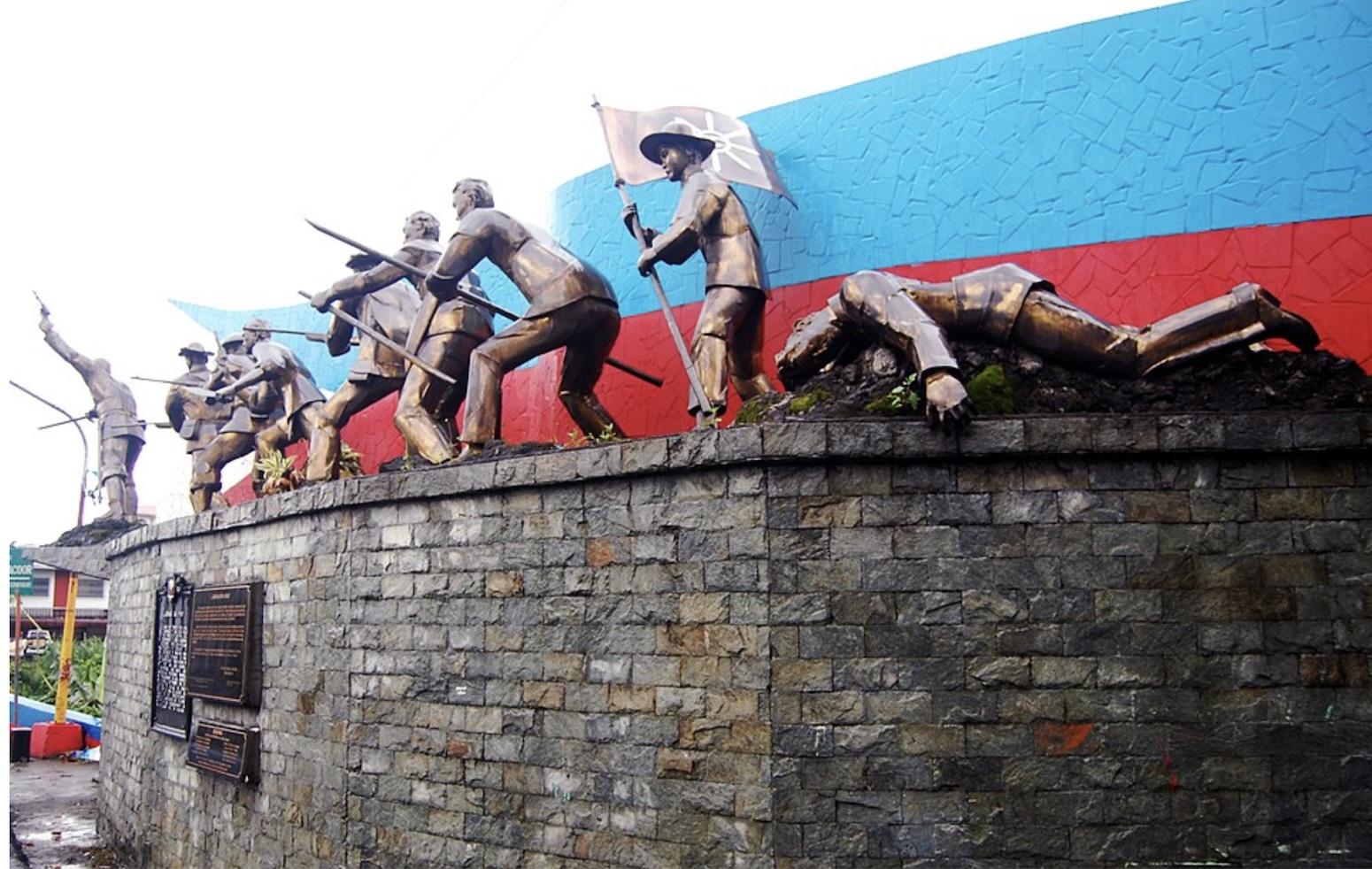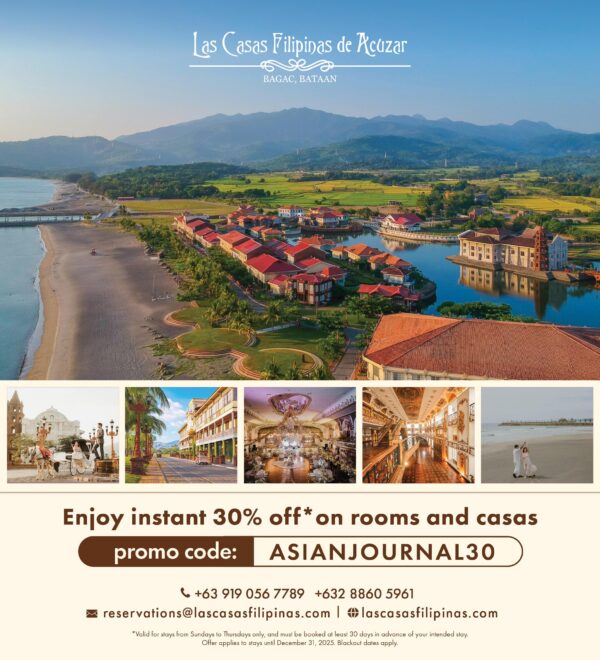It’s remarkable, what a long-unopened filing cabinet can yield. On this trip to Manila, we found a faded document with the ambitious heading: “CONCEPT PAPER: A PASIG-BASED COMMUTER TRANSPORT SYSTEM FOR METROPOLITAN MANILA AND ENVIRONS.”
I had just been introduced to Commodore Brillante Ochoco, Commandant of the Philippine Coast Guard. Upon learning that I was an advertising man, he asked me to suggest a topic for a talk that he needed to make before members of the United Nations Walking Corporation, a fanciful name for what I assumed was a gathering of gentlemen of leisure over coffee, much like the Intercontinental Hotel 365 Club and the old Escolta Walking Corporation at the venerable Botica Boie on the Escolta.
My mischievous self was tempted to suggest the Battle of Manila Bay led by another commodore, George Dewey, but I decided instead on a more benign theme that had to do with water (Philippine Coast Guard equals water, get it?). For a “walking” club, why not a topic on transport. Thus, water plus transport equals a Pasig River transport system.
This was back in the early 80s, well before EDSA had become a monstrous parking lot. But even then, traffic congestion tormented Metro Manilans. I, therefore, wrote a concept paper on a commuter system reviving the pre-war use of the Pasig River.
My dusty 40-plus-year-old paper reads:
1. The current situation
1.1. Continuing growth of Metro Manila population and resultant urban sprawl.
1.2. Escalating commuter transport problems caused by increase in number of motor vehicles, increase in number of commuters moving from the suburbs to Metro Manila’s business and commercial districts, inadequacy of existing thoroughfares and inadequacy of the transport systems themselves.
1.3.Negative effects on manpower productivity, traffic safety and on the ecology, as well as on cost-of-living, especially for low-income workers.
1.4. North-South commuter needs filled by Metrorail. East-West needs currently being met by standard land transportation systems, with corresponding problems and limitations.
2. The opportunity
2.1. Historically, the Pasig River has served as one of the principal transportation routes serving Manila and the towns of Rizal.
2.2. For years, however, the Pasig has hardly been employed for commuter transport (there are crude ferry services in operation at the present time).
2.3. The Pasig has also severely deteriorated because of pollution. Its banks are lined with slum dwellings. In this regard, the Metro Manila Commission and the national government have launched a determined program to save the Pasig and restore it to its former beauty and usefulness.
2.4. Running the East-West route, the Pasig passes through Metro Manila’s major business and commercial districts, including Mandaluyong, Makati, Santa Mesa, Quiapo, Santa Cruz and San Nicolas/Binondo and all the way up to the vicinity of the Port Area. The Metro Manila and Rizal towns through which the Pasig flows are, incidentally, among those suffering the most from traffic congestion.
3. The concept
To solve the foregoing problem, we propose to take advantage of the opportunity provided by the Pasig River, thus:
The Metro Manila love boat
Commuter Transportation System On the Pasig River
The Love Boat Transport System will have the following features:
3.1.Air-conditioned boats carrying the equivalent load of a standard bus in terms of passengers, plying the length of the Pasig from the farthermost Rizal town up to downtown Manila (Quiapo/Santa Cruz), with stops in Makati, Mandaluyong and other points.
3.2. Love Boat fares to be made affordable for average income workers.
3.3. Regular departure and arrival schedules to be observed. Fixed Love Boat stations to be designated. Corresponding wharves and facilities to be constructed.
Why did I suggest calling it the Love Boat? Because First Lady and Metro Manila Commission Governor Imelda Romualdez-Marcos had successfully launched the Love Bus, a commuter system that operated on regular and predictable schedules while offering air-conditioned comfort at a reasonable price. Besides, there was a weekly TV sitcom, The Love Boat, being aired at the time.
At any rate, Commodore Ochoco’s speech, in which he proposed the Pasig River transport system, was so well-received, it got wide newspaper coverage and Mrs. Marcos herself became interested in the concept. She sent for Ochoco who took me along to the meeting. The First Lady agreed to develop the concept further.
An overseas investment group also expressed interest in the concept and held several exploratory meetings with us.
Pleasantly surprised at the enthusiasm that his proposal had generated, Ochoco also arranged for us to actually sail the entire length of the Pasig River. Columnist Ruther Batuigas joined us on the trip.
Unfortunately, historic events overtook our incipient project. The Power Power Revolt of 1986 scuttled any further discussions of the idea. Ochoco was promoted to Rear Admiral and Flag Officer in Command of the Philippine Navy, but was soon displaced along with the ejection from Malacañang of the Marcoses.
However, a Pasig River commuter transport system was too good an idea to let go of. Through the various administrations that came after Marcos, attempts to establish and operate such a system have been made by private and government entities, with varying degrees of success and failure.
A news item last year read: “The new Pasig River Ferry System, which will begin operations in December 2018, aims to have 29 stations and 24 boats servicing 76,000 commuters per day or 19,836,000 per year—not yet including passenger volumes for weekend schedules, tours, or express routes. The new stations will be established along the river in the cities of Manila, Mandaluyong, Makati, Taguig, Pasig, and Marikina.
“At present, the Pasig River Ferry Service which is run by the MMDA has 12 stations: three stations are in Pasig City—Pinagbuhatan in Eusebio Avenue, San Joaquin on San Bernardo Street, and Maybunga on Dr. Sixto Avenue; two in Makati City—Guadalupe on J.P. Rizal Extension, and Valenzuela on A. Bonifacio Street; one in Mandaluyong—Hulo Station on Coronado Street; six in Manila—Lambingan on Bautista Street in Sta. Ana, Sta. Ana on Pedro Gil Street, Polytechnic University of the Philippines (PUP) Mabini Campus in Sta. Mesa, Lawton, Escolta on Muelle dela Industria, and Plaza Mexico in Intramuros.
“Aside from the ferry service, the Technical Working Group also proposes improved connectivity to the ferry stations through additional pathways such as bridges, linear parks and esplanades leading to the ferry stations. The addition of the bridges, parks and esplanades will also serve as a network of open spaces that will provide Metro Manila’s dense urban population with a ‘breathing space’ as well as an evacuation area during times of calamity.”
The story added that several government agencies had been mustered for the project. I also found this item online: “Early this year, President Rodrigo Duterte approved the revival of the Pasig River Ferry to solve the severe traffic in Metro Manila. Makati City Representative Luis N. Campos Jr. said that at least P2 billion was required to revive the ferry system with smaller boats passing through more stations at a faster speed.”
Frankly, it shouldn’t take an accidental discovery of old files and the efforts of a curious columnist to unearth information that affects millions of traffic-weary Metro Manilans. If I hadn’t exhumed my old files which, in turn, prompted me to research the topic, I wouldn’t have learned about these welcome developments.
No wonder the earlier efforts to operate the system didn’t fly. Neither will the current efforts succeed unless wide awareness, interest, comprehension and conviction are generated for it. Without Advertising, Promotions and Publicity, even the best products and services are doomed to fail.
The fellow who coined the saying, “Build it and they will come!” was a miserable failure. No one learned about what he had built. And nobody came.
(gregmacabenta@hotmail.com)







